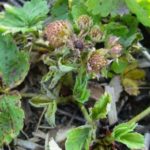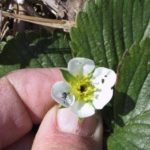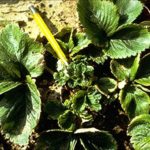Strawberry Kama is very popular with gardeners and summer residents, as well as high demand in the market. Her excellent taste, unpretentiousness in the care, drought tolerance, provided such a brand with a confident leadership position in the sales market. The description of this variety is given below.
Table of contents
Characteristics of strawberries varieties Kama
Such a fragrant beauty comes from Poland. Her "parents" are the Cavalier variety, popular in horticultural circles and Zenga Zengan. It is from them Kama inherited excellent yield and good taste.
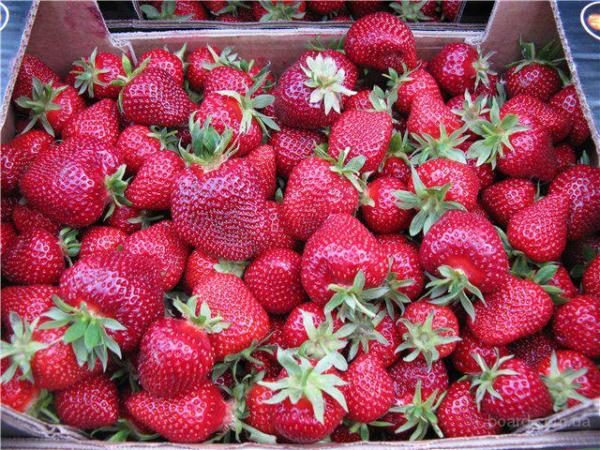
Bushes of this sort are quite compact in size. The leaves are dark green, all lowered down, the fruits are dark red. The berries have their own characteristic that distinguishes them from other varieties.: it ripens in two stages. At first, the berry becomes a dark red hue, at this stage it can already be eaten, but the taste of the fruit will have a pronounced acidity. If you and your loved ones are more in favor of the pronounced sweetness of such a delicacy, then you should wait until the color gamut of the fruit turns into dark maroon. At this stage, the strawberry acquires a special sweetness and pronounced strawberry flavor.
If, however, long-term transportation or long-term storage of berries is expected, then they should be torn off at the first stage of ripening. In the process of maturation, the berry will “reach” a certain sweetness and aroma.
In terms of ripening Kama refers to the early grade. Medium sized berries: 20-40 gr, but in the initial period, yields can reach 70 grams. Fruits "hide" under the leaves, which additionally protects them from birds, which are also not averse to eat the fragrant fruit.
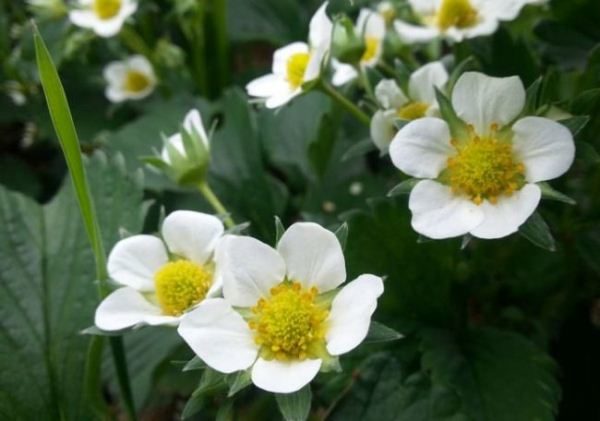
This species blooms early, but the flowering period is long, as is the fruiting period, which reaches up to 5 weeks. With proper care, one bush per season is collected to 1 kg berries.
This species is adapted for growing in greenhouses. In this case, the first harvest is collected in the middle of spring.
In the open field, without the use of greenhouses, the first harvest will delight in early June.
Advantages and disadvantages
The variety Kama has a number of advantages.:
- Early ripening time.
- Small number of whiskers.
- Long time fruiting.
- Great drought tolerance.
- Elevated yield.
- Large fruits with excellent taste characteristics.
- A great marketable conditionlong storage periods and good transportability.
- Expressed strawberry flavor.
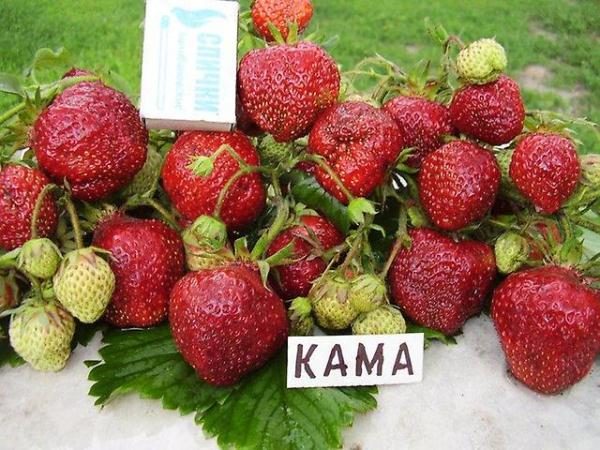
Despite all the advantages Kama has its drawbacks:
- Low fruit arrangement. The berries are hidden under the leaves and are located close to the ground.
- A large number of sheets on the bushesthat aggravates the harvest process.
- Takes up quite a lot of space., since the bushes are sprawling and the distance between them must be at least 50 or even 80 cm.
- This sort susceptible to fungal diseases.
Landing features
If you and your loved ones want to feast on a tasty and fragrant berry already in the middle of spring, you need to plant Kama in a greenhouse. This variety is very capricious., but still it is worth adhering to some recommendations before planting seedlings.
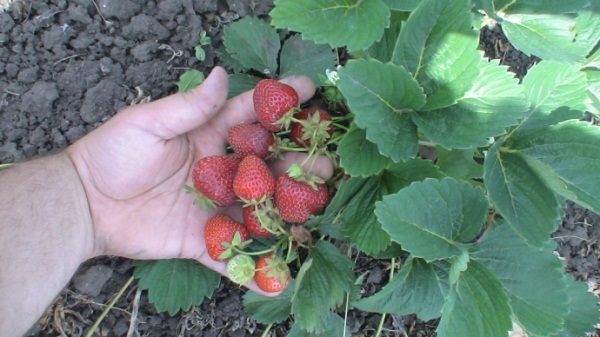
Planting strawberries does not require special wisdom, you just follow the generally accepted rules:
- Before disembarking seedlings need to be sanitized: for 10 minutes in a weak solution of potassium permanganate.
- Holes dig about 25x25 cm.
- Seedlings are immersed in the hole, a little sprinkled with earth, and lightly tamped. Cannot be rammed hard, in order not to limit the access of oxygen to the root system.
- Water the planted seedlings and lay out a layer of mulch.
- You can not grow strawberries on one plot more 3 years old.
Care
Variety Kama does not require much effort in the care. Care for him according to the standard scheme.
Watering
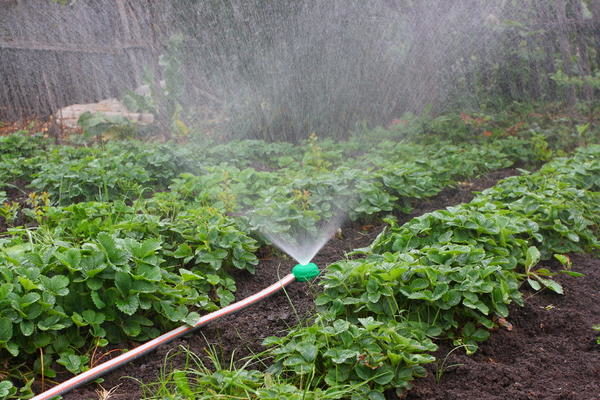
Despite drought tolerance, strawberries need timely wateringwhich is carried out once a week, in hot weather. If the weather is overcast and rainfall occurs regularly, then additional watering is not required. Mostly use drip irrigation system.
Feedings
The need for dressings can be determined independently: if you observe a plentiful growth of a bush, it means that the plant lacks potassium. This problem can be solved with the help of additional application of saltpeter, or wood ash.
Diseases and pests
The most common strawberry enemy is the nematode.. The first signs of the manifestation of the disease: leaf deformity.Unfortunately, it is possible to fight with such a disease only by mechanically removing the affected bush. Otherwise, the disease will quickly spread to healthy plants.
Strawberry mite and weevil also love to eat strawberriesand, moreover, not berries, but mostly strawberry leaves. With these pests it is possible to fight with the help of drugs that are sold in each specialty store.
- Strawberry mite on strawberry
- Strawberry is most often attacked by weevil.
- Dangerous pest of strawberries Kama is a nematode
Common mistakes
The most common mistakes in growing strawberries of the Kama variety are:
- No pre-disinfection seedlings.
- Wrong site selection: either strongly acidic or highly saline.
- Lack of additional shelter bushes during frosts. Although the variety is positioning itself as frost-resistant, it is still better to cover the area with agrofibre when night frost.
- Untimely watering. Although Kama is a drought-resistant variety, but, like all plants, it needs to be watered regularly on hot, hot days.
Conclusion
The variety of strawberries Kama is very unpretentious in the care, but very fruitful. If you follow all the above recommendations, you will effortlessly please yourself and your family with a delicious and fragrant delicacy.

